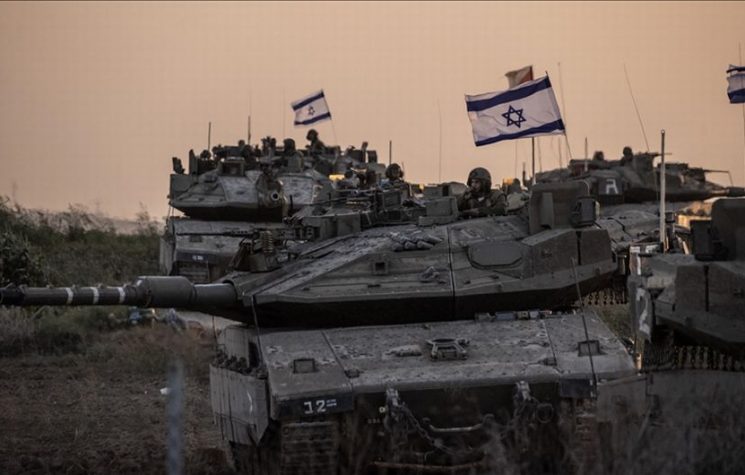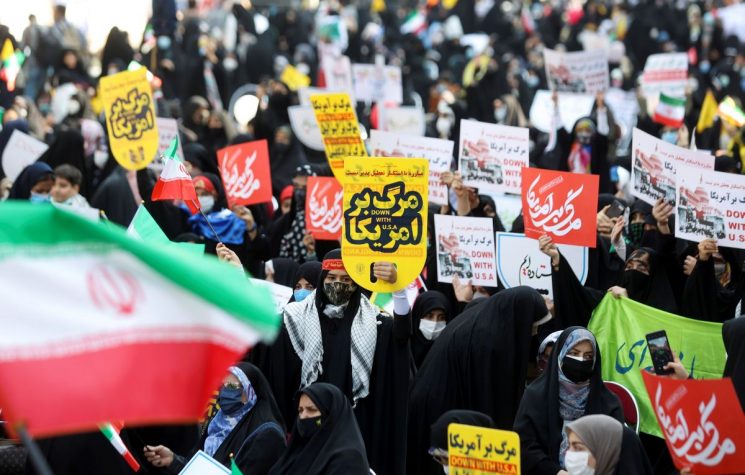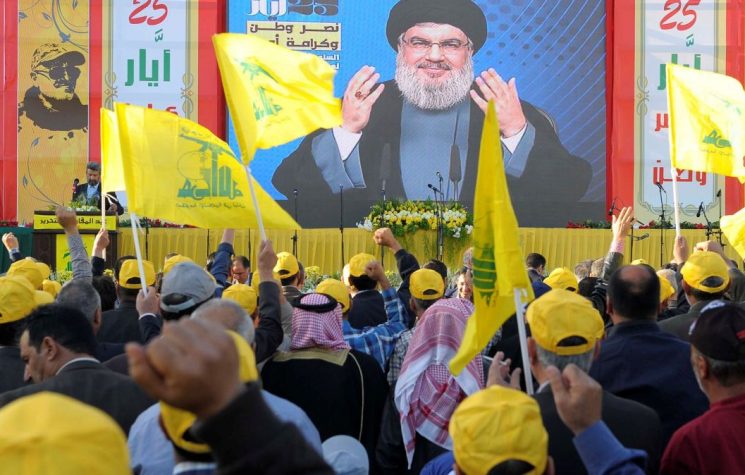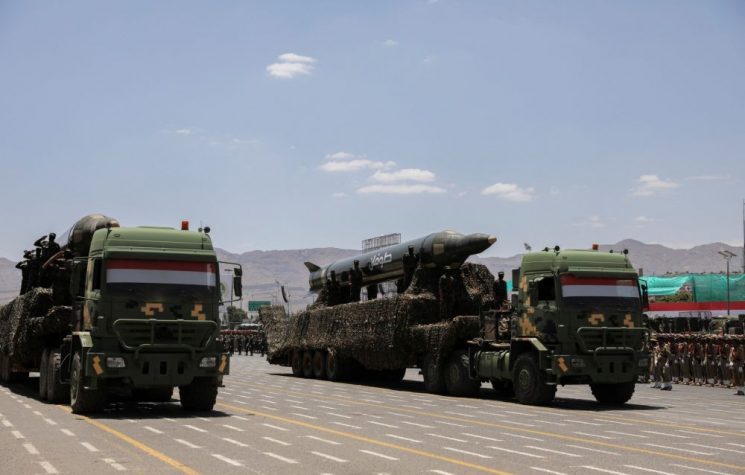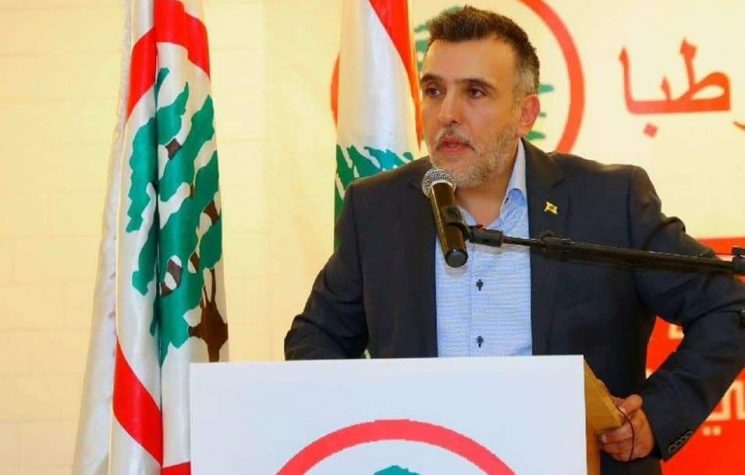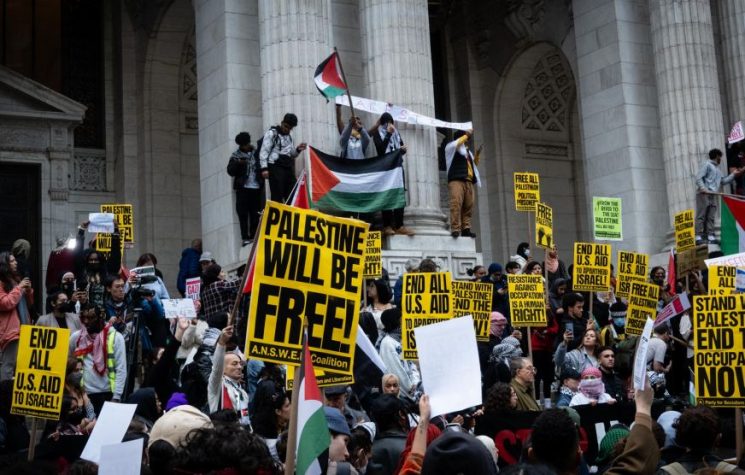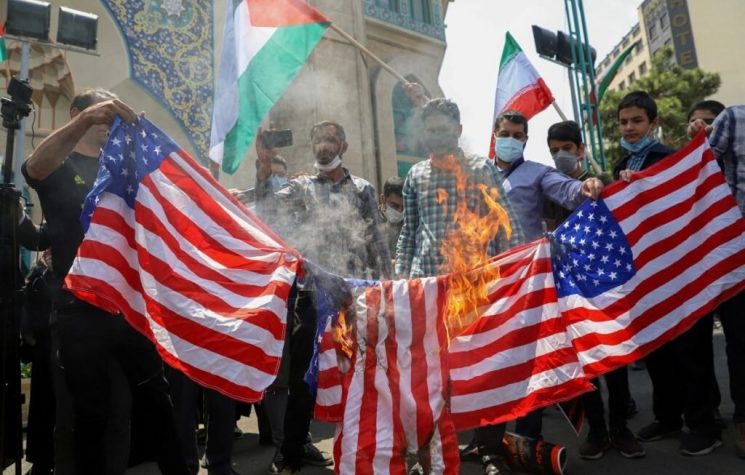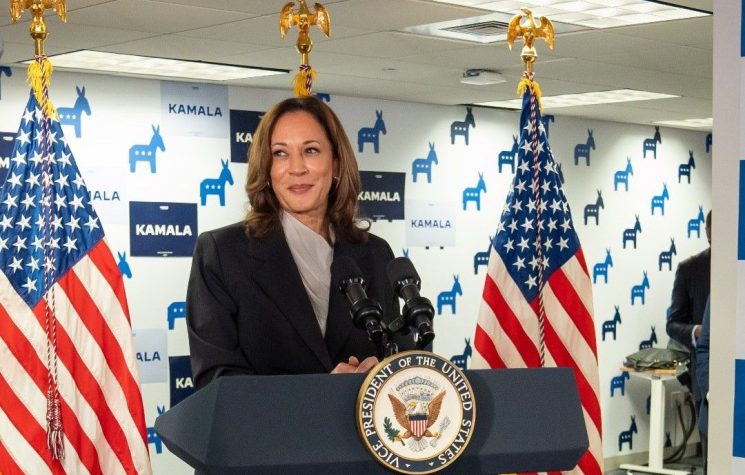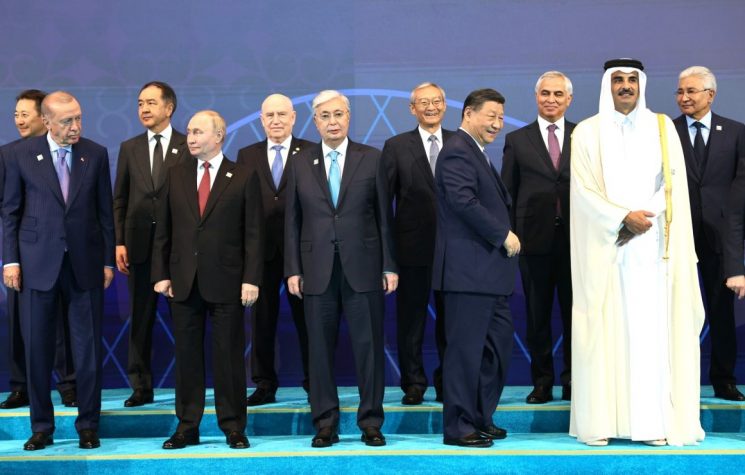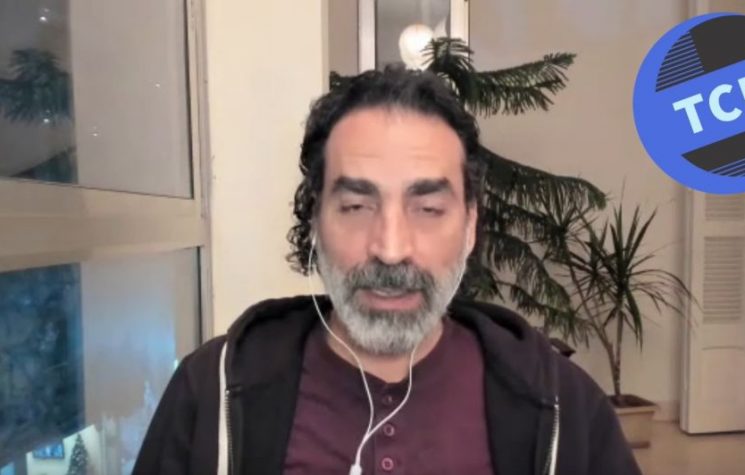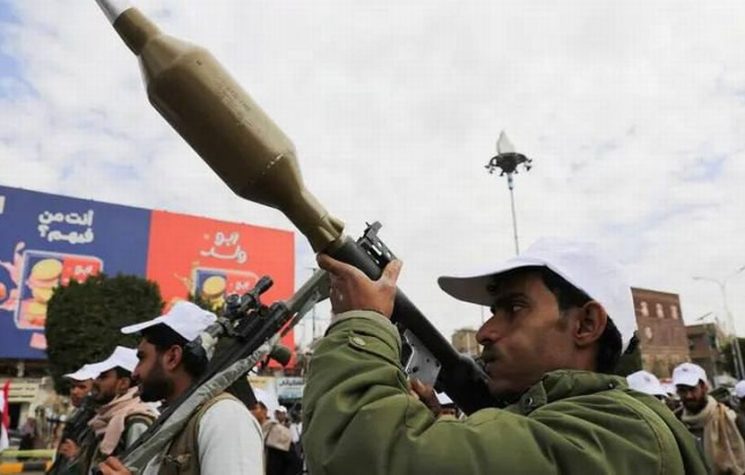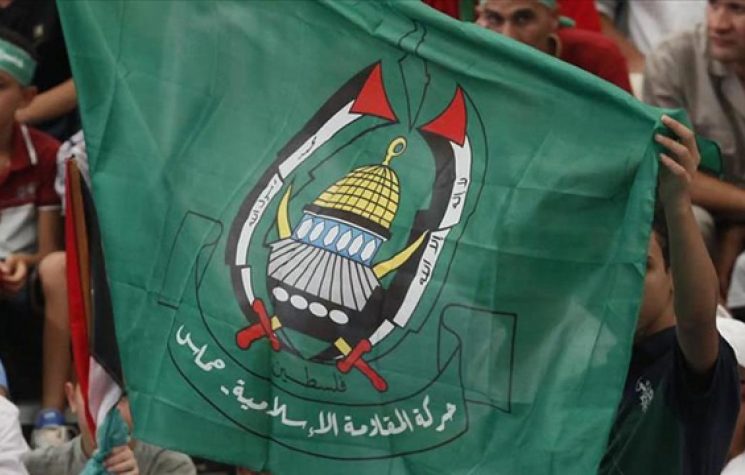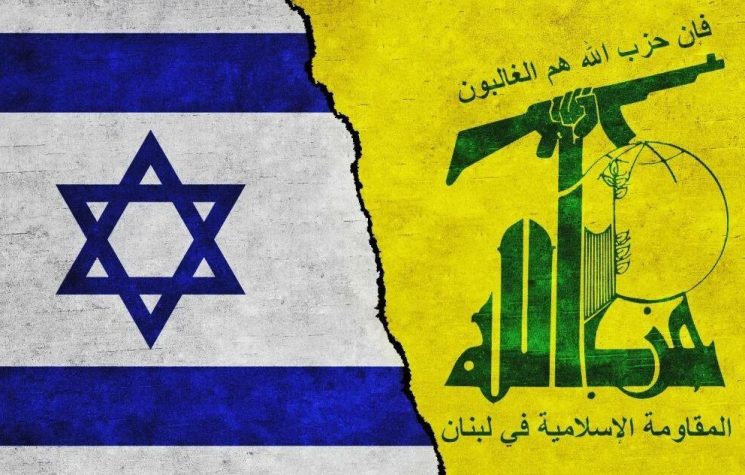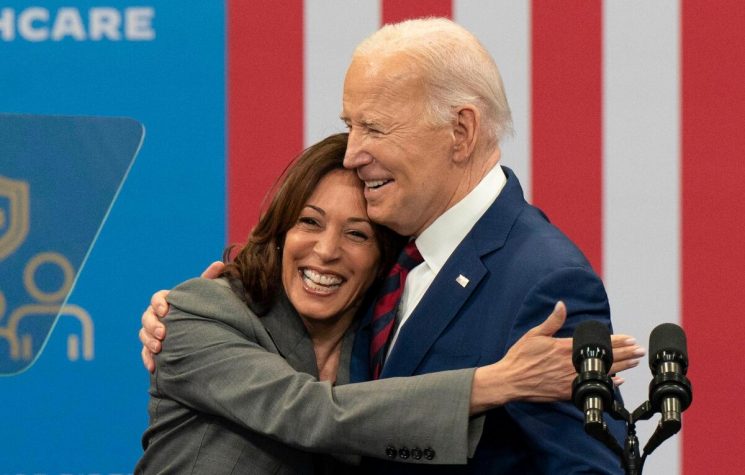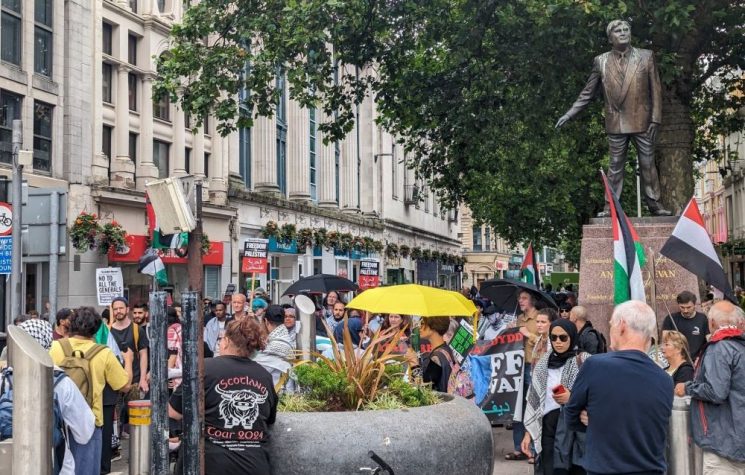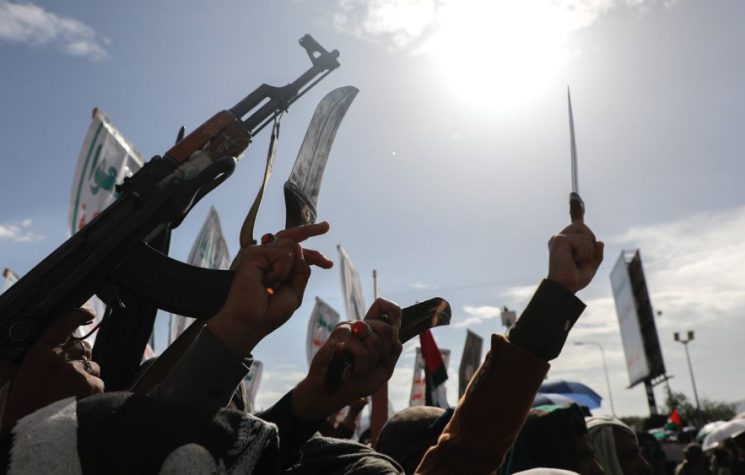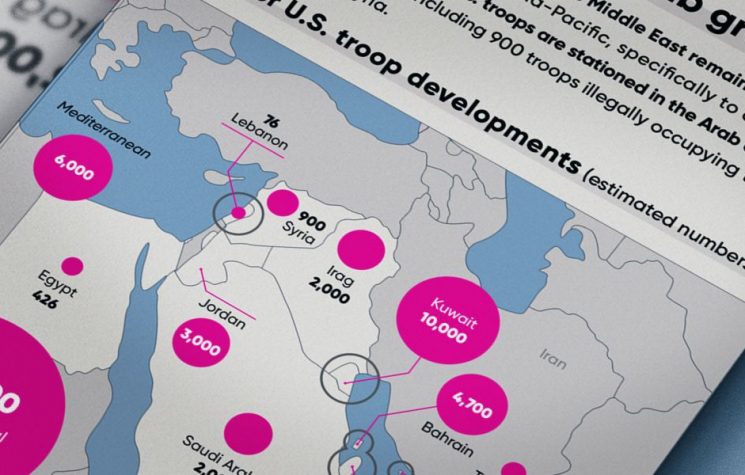We have entered a period of breakdown and violence, as the forces pulling apart the old status quo cascade and mutually reinforce one another.
❗️Join us on Telegram![]() , Twitter
, Twitter![]() , and VK
, and VK![]() .
.
Contact us: info@strategic-culture.su
In a speech on Tuesday, Hizbullah leader Seyed Nasrallah said that the Party will continue the border offensive until at least the Gaza massacre stops. The war in Gaza however, is far from over. And Nasrallah warned that even were a ceasefire to be reached in Gaza, “should the enemy perform any action, we will return to operating according to the rules and formulas that existed before. The purpose of the resistance is to deter the enemy, and we will react accordingly”.
Israel’s Defence Secretary Gallant has underlined that contrary to international consensus expectations, he too expects the war in Lebanon to continue. Gallant said the military has stepped up its attacks against Hizbullah by one level out of ten:
“The Air Force planes flying currently in the skies of Lebanon have heavier bombs for more distant targets. Hizbullah went up half a step, whilst we, a full one … We can attack not only at 20 kilometres [from the border], but also at 50 kilometres, and in Beirut and anywhere else”.
It is not clear what ‘red line’ Hizbullah would have to cross for Israel to significantly escalate its response to much higher levels; Israeli leaders have suggested that an attack on a strategic site; or an attack leading to major civilian casualties; or a substantive barrage on Haifa might constitute the breaking point.
Nonetheless, with three military divisions rather than the usual one now deployed in the north of Israel, the IDF has more forces poised for action on the northern border than it has preparing for an incursion into Rafah – at this point. It is clear, as Chief of Staff Halevy has specified, that Israel is “preparing for war” against Hizbullah (more than preparing for Rafah).
Is the threat to Rafah a bluff to put pressure on Hamas to concede on the deal and hostages? One way or another, both Israel’s political and military chiefs are adamant: The IDF will incurse into Rafah – ‘at some point’.
The qualitatively different Hizbullah’s strike on Safed on Israel’s northern regional command HQ on Wednesday – which that resulted in 2 dead and 7 further casualties – is being treating in Israel as the gravest attack since the start of the war, with Ben Gvir calling it a “declaration of war”. Subsequent Israeli attacks killed 11 people, including six children, in a barrage of strikes on villages across southern Lebanon, in retribution for the Safed blitz – with the fierce exchange of fire still continuing.
The ‘Safed Strike’ deep into the Galilee very likely was intended to signal that Hizbullah is not about to capitulate to western demands that it provide Israel with a ceasefire that is intended to facilitate evacuated Israelis to return to their homes in the north. As Nasrallah confirmed in a scathing attack on those external (Western) mediators who serve only as Israel’s lawyers, and neglect to address the massacres in Gaza:
“It is easier to move the Litani River forward to the borders, than to push back Hezbollah fighters from the borders, to behind the Litani River … They want us to pay a price without Israel committing to a thing”.
In these circumstances, Nasrallah clarified that residents of northern Israel will not return to their homes – warning that even more Israelis risk being displaced:
“‘Israel’ must prepare shelters, basements, hotels and schools to house two million settlers who will be evacuated from northern Palestine, [were Israel to expand the war zone].”
Nasrallah outlined what is clearly the agreed Axis of resistance’s overarching strategic plan. (There has been a flurry of meetings between senior Axis principals over the last week, across the region, for which Nasrallah is speaking):
“We are committed to fighting Israel until it is off the map. A strong Israel is dangerous to Lebanon; but a deterred Israel, defeated and exhausted, is less of a danger to Lebanon”.
“The national interest of Lebanon, the Palestinians, and the Arab world is that Israel leaves this battle defeated: Therefore, we are committed to Israel’s defeat”.
Put bluntly, the Axis has its vision of the conflict’s outcome. And it is a “deterred, defeated and exhausted” Israeli State. By implication, it is an Israel that has relinquished the Zionist project – one that is reconciled to the notion of living as Jews between the River and the Sea – albeit with rights no different to others living there (i.e. Palestinians).
On the other side, the western strategic plan, as the Washington Post reports – which the U.S. and several Arab countries hope to present within a few weeks – is a long-term plan for peace between Israel and the Palestinians, including a “time frame” for the establishment of a provisional de-militarized Palestinian “state”:
“Imperatively, it begins with a hostage deal accompanied by a six-week cease-fire between Israel and Hamas. While it may be termed “cessation of hostilities” or an “extended humanitarian pause,” such a cease-fire will signal the de facto end of the war along the lines and scale that it has been fought since 7 Oct.”
The plan addresses “Post-war Gaza”, in terms already well-known. As senior Israeli commentator, Alon Pinkas, affirms:
“Parallel to the announcement U.S., Britain and possibly other countries will consider and eventually make a joint statement of intent by recognizing a provisional, demilitarized and future Palestinian state – without delineating or specifying its borders”.
“Such a recognition does not necessarily contradict Israel’s legitimate and reasonable demand to have overriding security control over the area west of the Jordan River in the foreseeable future … [it constitutes] a practical, timebound, irreversible path to a Palestinian state living side-by-side in peace with Israel … whose recognition could also be submitted to the UN Security Council – as a binding resolution. Once the Arab countries sign off on such a framework, the U.S. believes that neither Russia nor China would veto it …
“Within the “regionalization” phase however, the Americans will craft a regional security cooperation mechanism. Some in Washington imagine a reconfigured region with a new “security architecture” as a harbinger to a gradual Mideast version of the European Union, with greater economic and infrastructure integration”.
Ah – the New Middle East again!!!
Even Alon Pinkas, an experienced former Israeli diplomat, concedes: “If the plan seems too fantastical to you: You’re not alone”.
The basic improbabilities to this plan simply are disregarded. Firstly, Israel’s Finance Minister Smotrich responded to the reported American-Arab plan, saying: “there’s a joint American, British and Arab effort to establish a terrorist state” next to Israel. Second, (as Smotrich further notes): “They see the polls. They see how the absolute majority of Israelis oppose this idea [of a Palestinian State]”; and thirdly, some 700,000 settlers were installed in the West Bank – precisely to block any Palestinian State.
Is the U.S. really going to impose this onto a hostile Israel? How?
And, from the Resistance perspective, ‘a provisional, demilitarized and future Palestinian ‘state’, without delineated or specified borders, is not a state. It is truly a Bantustan.
The reality is that when a Palestinian State might have been a real prospect (two decades ago), the international community turned a willing ‘blind eye’ – for decades – to Israel’s successful and complete sabotage of the project. Today, circumstances are much changed: Israel has moved far to the Right and is in the grip of an eschatological passion to establish Israel on the entire “Land of Israel”.
The U.S. and Europe have only themselves to blame for the dilemma in which they now find themselves. And a policy stance – such as outlined by Biden – plainly said is doing untold strategic damage to the U.S. and its compliant European allies.
Even on the Lebanon track, let us be plain too, Israel’s demands from Lebanon go far beyond a mutual ceasefire. There is no guarantee, even should a ceasefire be reached in Gaza as part of a comprehensive hostage/end-of-war deal, that Nasrallah will agree to withdraw all his forces from the border with Israel, or conversely, that Israel will comply with its commitments.
And with the U.S. defining its Palestinian ‘solution’ as an improbable, provisional, disarmed and wholly impotent Palestinian entity, nestled within a fully militarised Israel, exercising ‘full security overlordship from the River to the Sea’, it would not be surprising were Hizbullah rather, to opt to pursue the Axis’ plan of a defeated, exhausted post-Zionism.
Israeli commentator, Zvi Bar’el, writes:
“Even were the American assumptions to become a working plan, it is still unclear what policy Israel will adopt on Lebanon. Even pushing Hezbollah back so that Israeli communities are no longer within the range of its anti-tank missiles does not remove the threat of tens of thousands of medium and long-range missiles. The deterrence equation between Israel and Hezbollah will continue to determine [the true] reality along the border”.
[The current U.S. working assumption, as presented by the Administration’s special envoy Amos Hochstein in his previous visits to Lebanon], “is that a border demarcation agreement between Israel and Lebanon will result in final and full recognition of the international border and thus deny Hezbollah the formal basis for justifying its continued fight against Israel to liberate occupied Lebanese territories. At the same time, it allows the Lebanese government to order its army to deploy its forces along the border in order to assert its sovereignty over its entire territory and demand that Hezbollah forces pull back from the border”.
This is just more wishful, ‘fantastical’ thinking. And it contains a flaw: Hochstein’s work plan does not include an agreement on the Sheba’a Farms, but only on the ‘Blue Line’ – the border agreed in 2000, but which is not recognized by Lebanon as an international border. If the issue of the Sheba’a Farms is not settled, Hezbollah will not be bound by a limited demarcation accord that omits the Sheba’a area.
Since Hamas’s attack on Israel on 7 October, every stratagem and protocol, dug from some musty West Wing cupboard, and upon which the U.S. leant, has failed. What was supposed to be a limited and compartmentalized military operation in Gaza by the IDF has turned into a regional firestorm. Aircraft carriers sent to deter other actors from getting involved failed with the Houthis; U.S. bases in Iraq and Syria became targets, with attacks on U.S. bases continuing, despite U.S. attempts at delivering deterrent ‘punches’.
Quite clearly, Netanyahu is ignoring Biden, and ‘defying the world’ – as this week’s headlines attest:
“Defying Biden, Netanyahu Doubles Down on Plans to Fight in Rafah” (Wall Street Journal)
“As Israel corners Rafah, Netanyahu defies the world” (Washington Post)
“U.S. won’t punish Israel for Rafah op that doesn’t protect civilians” (Politico)
“Egypt Builds Walled Enclosure on Border as Israeli Offensive Looms: Authorities are surrounding an area in the desert with concrete walls as a contingency for possible influx of Palestinian refugees” (Wall Street Journal).
Netanyahu has vowed to forge ahead, saying on Wednesday that Israel would mount a “powerful” operation in the city of Rafah, once residents have been “evacuated”. Israelis explicitly say the White House is not opposed to the Rafah blitz, provided Palestinians are given the opportunity to “evacuate” (to where, is left unsaid). (Meanwhile, Egypt is building a refugee camp inside its border, surrounded by concrete walls …).
At this point, all of the U.S.’ various problems – the political polarization, widening war, funding for wars, the alienation amongst the swing-state Arab constituencies and Biden’s sinking ratings – are beginning to feed into, and reinforce, each other. What began as a foreign-policy issue – Israel defeating Hamas – has become a significant domestic crisis. Dissatisfaction within the U.S. at Israel’s conduct of the war is fuelling the growth of significant protest movements. Who can truly believe that yet another trip by Blinken to the region will solve anything at this point, asks Malcom Kyeyune?
It is hard to say where things in the region will stand, a couple of months from now. We have entered a period of breakdown and violence, as the forces pulling apart the old status quo cascade and mutually reinforce one another.











